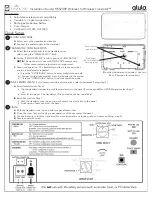
With the F1-button you will start the storing-procedure. You will see a display-announcement for
selecting a storage-space.
The storage-spaces 1-9 you can select with the Value-wheel. Pressing the F1-button you will store
the constructed pattern. The F3-button will cancel your storing-action.
Before you start using the following function you should go through the sequence-section of this
manual. In the following we put our main interest on realtime-record-function.
The sequencer of the Sirius doesn’t care if you are the artist playing virtuous notes into the
sequencing program or if it is the arpeggiator. This means while real-time-recording you always can
turn on the arpeggiator and record it into the sequencer. here it doesn’t matter if the arpeggiator is in
the Gater, Chord or normal mode. Everything will be recorded by the sequencer.
Because the sequencer has direct access to the sounds of the Sirius (pass the arpeggiator) you won’t
have to worry that your „transferred” arpeggio-pattern uses the arpeggiator directly again.
If you just found again a really great arpeggio-pattern but you don’t remember which notes you
played for it, you can transfer this pattern without searching for the lost notes. Just let the arpeggiator
run and select the wanted Motif-length in your sequencer-edit-menu. Than activate the realtime-
record-function. While you hear the metronome your pattern is silence at first. But than it plays again
in the wanted settings and will be transferred directly into your sequencer.
to Motion 5
[ok] [cancel]
How to record the arpeggiator into the intern sequencer:
By the way:
The Arpeggiator
68
Tip
















































